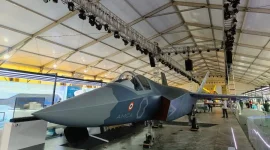- Views: 4K
- Replies: 26
Dr. S. Somanath, Chairman of ISRO, recently sparked a nationwide debate with his remarks on India's contrasting achievements in rocket and aircraft engine development.
While celebrating ISRO's success in building indigenous rocket engines, he highlighted the continued reliance on foreign technology for fighter jet engines, raising the question: Can ISRO's expertise bridge this gap?
Dr. Somanath emphasized ISRO's comprehensive engine development program, encompassing a wide range of propulsion systems for rockets, all designed and manufactured within India. This self-reliance stands in stark contrast to India's dependence on imported engines for its Light Combat Aircraft (LCA) Tejas, which currently utilizes General Electric F404 and F414 engines.
ISRO's impressive track record includes the development of powerful cryogenic engines, a technology mastered by only a handful of nations. These engines have powered successful missions like Mangalyaan, Chandrayaan, and the upcoming Gaganyaan human spaceflight program. This mastery of complex propulsion technologies has positioned India as a leading force in space exploration.
Dr. Somanath's comments, while not an official proposal, have reignited discussions on whether ISRO could contribute to developing indigenous jet engines for military aircraft. This is a long-standing aspiration for India, aiming to reduce dependence on foreign technology and bolster its defense capabilities.
The challenges in developing high-performance jet engines are significant. These engines must withstand extreme temperatures and pressures while delivering the thrust required for supersonic flight. Despite decades of effort, India has yet to produce a jet engine that meets these demanding requirements.
However, ISRO's expertise in engine design, testing, and manufacturing could potentially be leveraged to accelerate progress. The organization's experience with advanced materials, complex combustion processes, and sophisticated control systems could prove invaluable in overcoming the technological hurdles.
Furthermore, ISRO's development of the Next-Generation Launch Vehicle (NGLV), also known as Soorya, showcases its continued push for innovation in propulsion technology. The NGLV is expected to feature cutting-edge engines for manned and heavy-lift missions, further demonstrating ISRO's capabilities.
While the direct transfer of rocket engine technology to jet engines may not be straightforward, ISRO's expertise could undoubtedly contribute to overcoming critical challenges. Whether through collaboration with existing defense research organizations or a more direct role, ISRO's involvement could potentially accelerate India's pursuit of self-reliance in fighter jet engine technology.

